If you enjoy a nice cup of tea, you may have heard that using old-fashioned, cast-iron teapots and kettles is a great way to make that perfect cuppa. In Japan, many people enjoy making tea in traditional cast iron teapots and kettles called tetsubins. But do you know the difference between the two vessels? In this article, you can learn the difference between a Japanese cast-iron teapot and a kettle.
Table Of Contents
- Features of a cast-iron kettle
- What do kettles look like?
- Using a traditional kettle in premodern Japan
- What is a cast-iron teapot?
- Attributes of a cast-iron teapot
- What do Japanese teapots look like?
- Cast iron teapot vs. kettle
- Dual-purpose teapot/kettle
- Benefits between teapots and kettles
- Summary
What Is The Difference Between A Cast Iron Teapot And A Kettle?
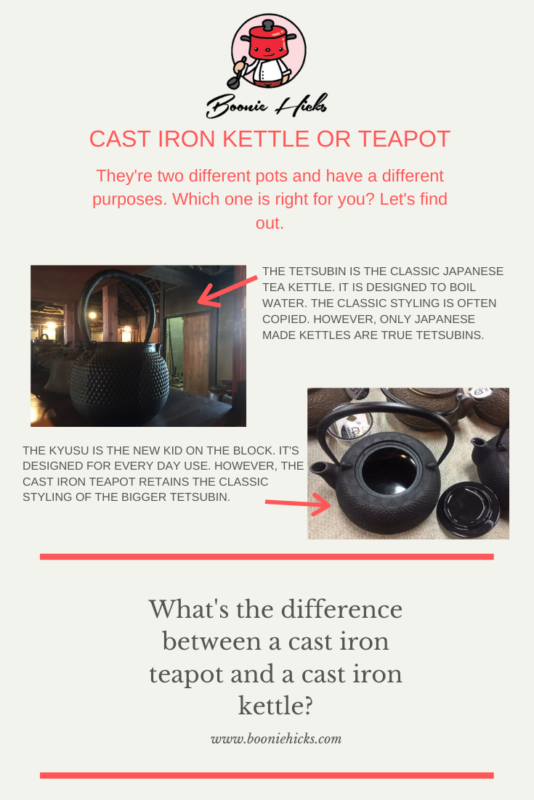
Japanese Kettle Is Also Known As A Tetsubin.
Cast Iron Kettle Features
- Japanese kettles are to boil water for your tea and not for steeping
- Kettles tend to be larger than cast-iron teapots and hold a larger capacity of water
- Traditionally, kettles do not have an enamel lining, and the interior is raw iron
- Does not come with a tea strainer
Since cast iron kettles don’t have an enamel lining. Some kettles can be used on a direct heat source, such as a fireplace and open flame. However, I recommend you check with the retailer you purchase from to be on the safe side.
What Do Japanese Kettles Look Like?
- Japanese cast iron kettles come in a variety of shapes and sizes.
- Usually, older kettles hold over a quart of water. However, modern kettles tend to be smaller.
- Modern tetsubins have a simple exterior with subtle patterning.
- Some have simple pictures, such as horses and mountains.
- Have a dull gray interior or a calcified white layer over the iron.
Antique Japanese Kettles
Early Japanese tea kettles were heavy pots. And much larger than the ones you are likely to see today. Back then, the Japanese used an indoor hearth called an Iori. A tetsubin hanging over an Iori would have been a common feature in Japanese homes. The Iori was a way to cook food and warm their homes before electricity.
Hanging A Cast Iron Kettle Over An Iori Served Two Purposes:
- Hanging a tea kettle over the fire would mean there was always hot water available
- The steam would humidify the room; indoor fires make the air extremely dry
Although the Japanese heat their homes using modern technology. It is still not uncommon to see a kettle on a heater to humidify the room, especially in public schools. And if you have a fireplace, you may want to use a tetsubin in winter to humidify the room and have hot water ready anytime you feel like a cup of tea.
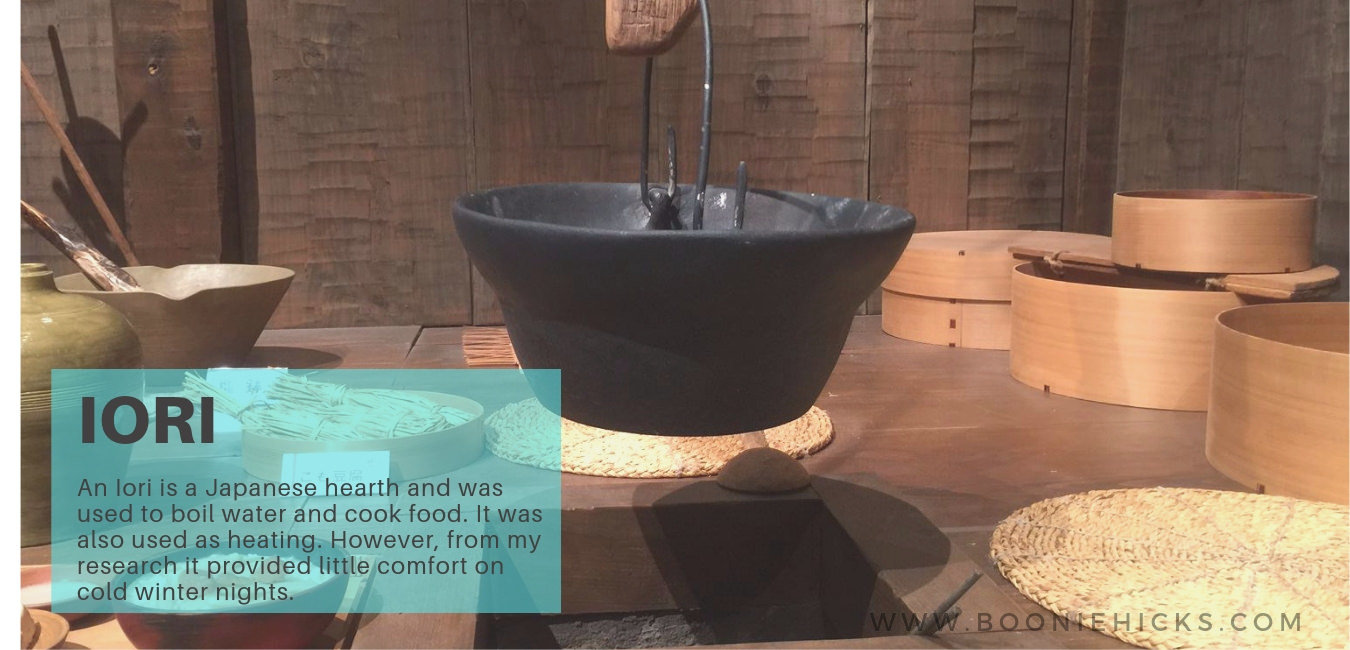
What Is A Cast Iron Teapot? (Kyusu)
Cast iron teapots and kettles look similar, but teapots look smaller and have enamel on the inside. This is to prevent rust. It is important to remember not to use a teapot on a stove or over an open fire.
Cast iron teapots are for brewing or steeping tea, not for boiling water. If you boil water in a cast-iron teapot. The enamel may chip or craze (develop fine cracks). Whatever you do, don’t use your enamel teapot on your stove.
Cast Iron Teapot Features
- Usually, teapots hold less than a quart of water.
- Most cast-iron teapots are lined with enamel to prevent rusting.
- Most Japanese cast-iron teapots will come with a tea infuser.
- Many teapots will have an unfixed handle that can fold down for storage.
Cast iron teapots are designed to steep tea and not to boil water. And most come with an enamel lining. This enamel prevents rusting and makes your teapot easy to clean.
What Do Japanese Teapots Look Like?
- Cast-iron teapots come in a range of colors and sizes
- Available in both modern and traditional design
- Handles are placed over the teapot for easy pouring
The use of cast iron teapots has become popular in Japan. Teapots come in many sizes and colors, but brightly colored, single-serve teapots are commonplace among Japanese office workers.
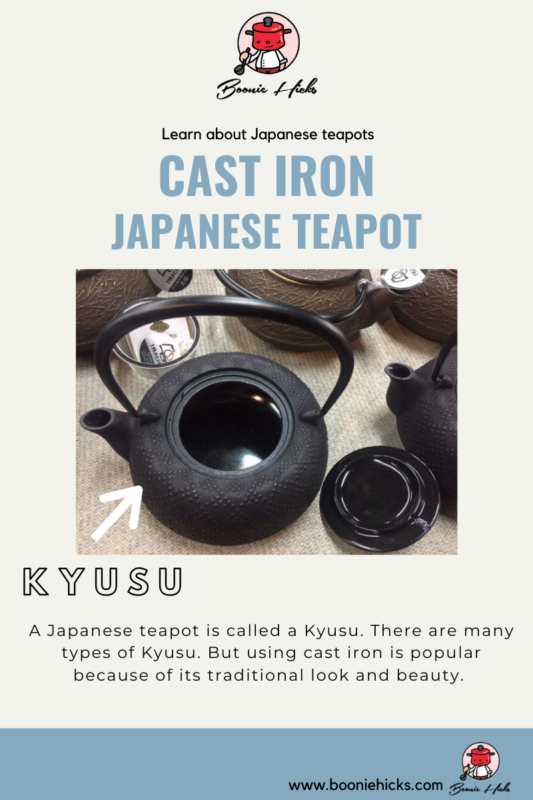
Today, Cast Iron Teapots Are More Popular Than Cast Iron Kettles.
You could argue that Japanese enameled teapots are not part of traditional Japanese culture since the enameling came from the West. And clay teapots are more popular.
However, cast iron teapots are increasingly popular thanks to smaller pots and colorful designs.
I’ve written an article on some of the best cast-iron teapots. If you’re interested, click the link.
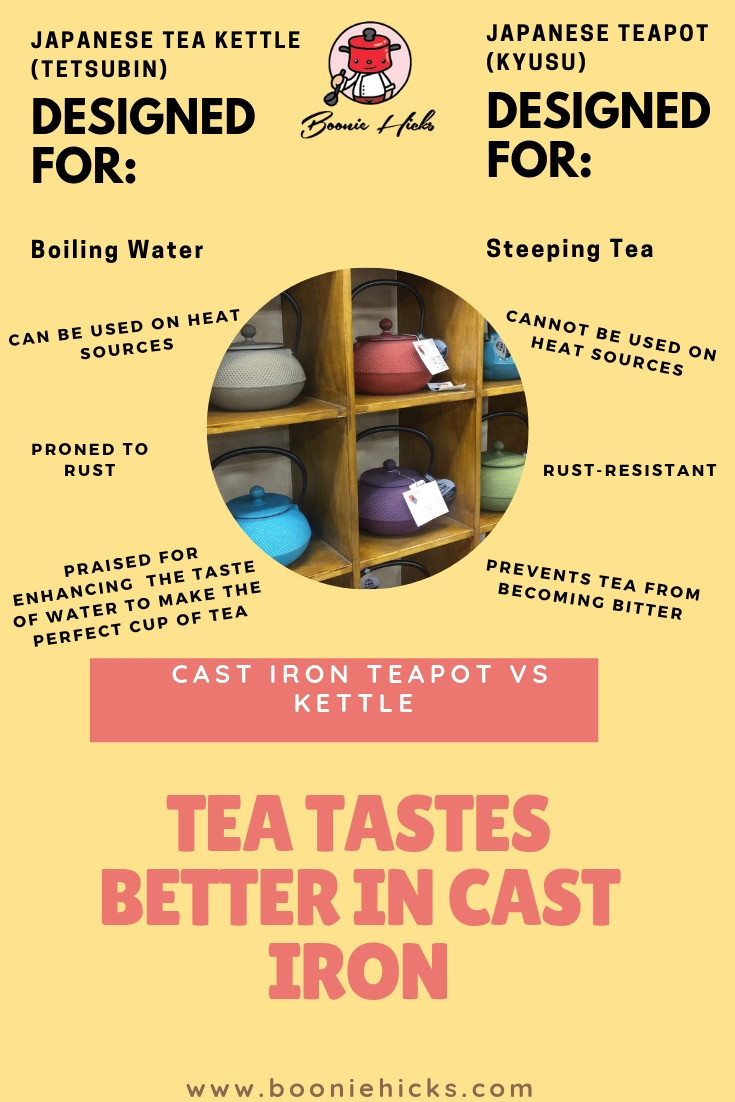
Cast Iron Teapot vs. Cast Iron Kettle.
- Apart from the enamel inside the teapot, there are two simple ways to distinguish them: kettles generally hold more water. Some hold up to two quarts (about two liters) of water, whereas most teapots hold between 300-500 milliliters.
- Many Japanese teapots have a tea infuser that fits snugly into the pot. While a traditional kettle will come without a tea infuser.
Is There A Hybrid Teapot Kettle?
While kettles and teapots are for different purposes. There are hybrid versions available. With these teapots, you can use one vessel to boil water and brew tea.
These hybrids are lacquered or seasoned on the inside to prevent rust. But unlike enameled teapots, the flexible coating does not crack or craze. In general, they look more like traditional seasoned cast iron.
Some seasoned teapots are not induction-compatible. So, I would recommend checking with the retailer before purchasing.
Cast Iron Teapot, Kettle, Or Hybrid. Which One Is Right For You?
Now that you know the differences between cast iron kettles and teapots. The next question you might ask is, “Should I buy a kettle, teapot, or a fusion between the two?”
I recommend choosing a standard enamel teapot for your first purchase. Of the three choices, I think a regular cast-iron teapot is the best option for most people. And because of the enamel lining, it will be easy to clean and maintain.
Table: Comparison Between Cast Iron Kettles, Teapots And Dual-Purpose Teapots
Cast-Iron Kettle | Enameled Teapot | Seasoned Teapot | |
Purpose | Boil water | Steep tea | Boil water Steep tea |
Cost | High | Medium | Medium |
Interior | Raw iron | Enamel lining | Polymerized oil (seasoning) |
Cleaning | Not required | Hand wash (easy clean interior) | Hand wash (sponge only) |
Rust | Medium-High | Low | Medium |
Conclusion
Cast iron teapots and kettles are durable, beautiful tea vessels. You can use them on special occasions and for everyday use. Many people use these teapots as part of their nightly routine.
And now you know the difference between cast iron teapots and kettles. You can avoid inadvertently damaging your teapot.
This reminds me, do you want to know how to care for your cast iron kettle? This article will cover many questions you may have.
And if you want to learn how to use your teapot, click the link to read the step-by-step guide.
References
- Kyoto National Museum https://www.kyohaku.go.jp/eng/dictio/kinkou/cha.html
- https://shihateacomfort.com/type-and-shape-of-japanese-teapots/
- https://en.wikipedia.org/wiki/Tetsubin
- https://topictea.com/blogs/tea-blog/everything-about-japanese-cast-iron-teapots-tetsubin
- https://steepster.com/discuss/13073-help-non-enameled-iron-teapot-rusting-and-flaking

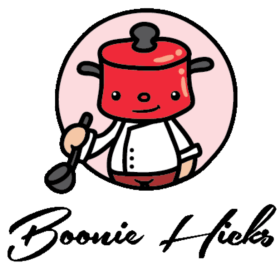
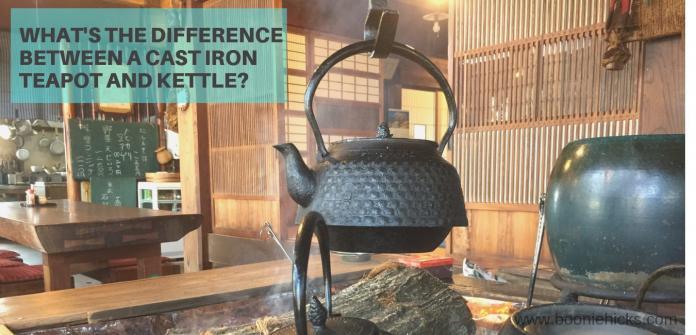
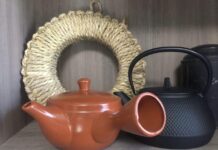
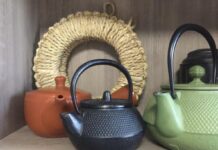
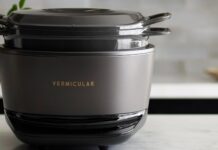



Hi Boonie
I thought a Kyusu is a small side handle teapot? And a cast iron pot is a kettle to boil water to put into a Kyusu.
Thanks
Hi Amy
A Kyusu is a vessel to steep tea, and there so there is a common misconception that Japanese only has a side handle. But they come in many shapes and sizes. The side handle teapot is suitable for one or two people, but often a larger teapot is needed. Here are a few different styles of Japanese teapot:
1. The side handle teapot called Yokode no kyusu.
2. The iron teapot called Tetsu no Kyusu.
3. Top handle teapot called Uwade no kyusu.
Cheers Amy, hope this helps.
I was looking at a Kotobuki manufactured tea pot made in Japan but the label has San Francisco and Japan on a very small sticker. The bottom of the kettle says Made in Japan, but I can’t find info on them other than sold in San Francisco as an importer. What do you know about them?
Maybe I should purchase an Iwachu, there’s clearly info about that on the web.
Hi Karole
Thanks for getting in touch,
I believe the Kotobuki is a trading company that imported a variety of products manufactured in Japan. And their product line is now distributed under another importer called Miya Wholesale. Unfortunately I do not know the foundry they have contracted to make their teapots. But it highly likely it’s one on the many Iwate based foundries such as Iwachu.
If you decide to purchase an Iwachu teapot, I can highly recommend them. They are one of the most respected ironware brands in Japan. I have also visited their factory store and workshop. And always find the staff extremely knowledgeable and friendly.
Have fun researching